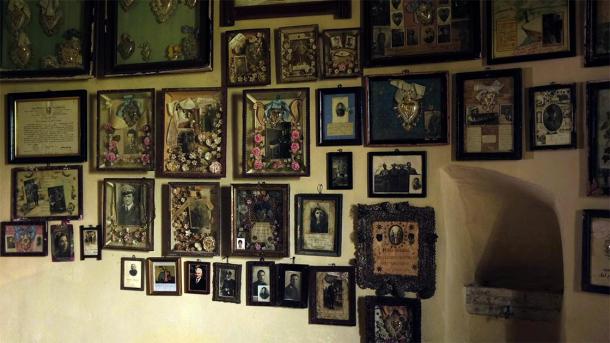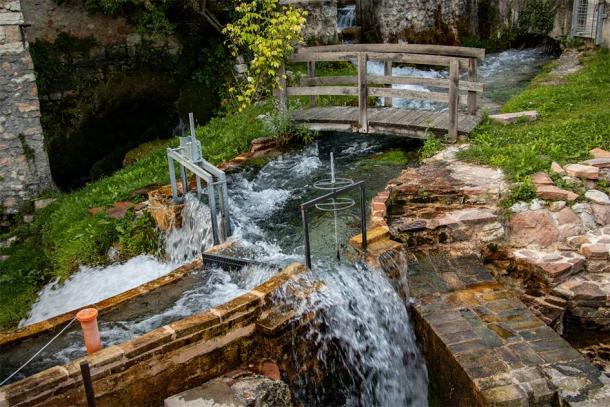Rasiglia is a small village located in the province of Perugia, in the central Italian region of Umbria. The village, which traces its history all the way back to the Middle Ages, is known also as the Little Venice of Umbria and the Village of Streams. This is due to the fact that Rasiglia is crossed by many streams. Rasiglia is rich in history, and three of its best-known sites are its industrial buildings, the ruins of Rasiglia Castle, and the Sanctuary of the Madonna of the Graces.
The Little Venice of Umbria
The village of Rasiglia is nestled in Umbria’s green hills, with about fifty stone houses built on the slope of a hill. The village is crossed by narrow streets and streams, the latter fed by waters from the Menotre River. It is not difficult to see why the village is known also as the Little Venice of Umbria. Rasiglia is able to trace its history to the Medieval period, with the first records that mention the village dating to the early 13 th century.
At that point of time, the village was an important settlement, thanks to its proximity to the Via della Spina . This road, which is considerably older than Rasiglia, since it was established during Roman times, connected the Adriatic coast to Rome. Hence, the village prospered. As time went by, however, Rasiglia lost its importance, perhaps due to a decline in the road’s significance.

It is not difficult to see why the Medieval village is known also as the Little Venice of Umbria. It became a center of rural industry by harnessing the hydraulic power provided by its many streams. ValerioMei / Adobe Stock
Rasiglia Castle: Home of the House of Trinci
One of the primary tourist attractions in the village are the ruins of Rasiglia Castle. The castle is associated with the house of Trinci, a historic noble family of Umbria. During the 13 th and 14 th centuries, when various popes were in conflict with the Holy Roman emperors , the Trincis supported the former, and rose to become the ruling family in Foligno. During their time in power, the Trincis constructed many castles to defend their lands. One of these was Rasiglia Castle, which is strategically located on the hill overlooking the village.
The castle was designed in an irregular shape, so as to take full advantage of the hill’s natural characteristics. Apart from its defensive purposes, the castle served as a residence for the Trincis when they came to the village. Over the centuries, however, the castle fell into ruins. In 2006, some restoration work was carried out and as a result, parts of the castle, such as a section of walls with defensive towers and the ruins of the main keep, can be visited today.

Inside the Sanctuary of the Madonna of the Graces, the walls of the church are covered in votive offerings which attest to the miraculous properties believed to come from the spring waters nearby. ( Castello di Postignano )
Rasiglia’s Sanctuary of the Madonna of the Graces
Rasiglia’s third attraction, the Sanctuary (sometimes referred to as a church or shrine) of the Madonna of the Graces was built shortly after the Trinci family fell from power. During the 15 th century, Corrado III, the last Trinci ruler of Foligno, got onto the wrong side of the Papacy due to his ostentatious display of power. Consequently, Foligno was conquered by Cardinal Giovanni Maria Vitelleschi on the 8 th of September 1439, and became part of the Papal States .
In 1450, Antonio Bolognini, the Bishop of Foligno, ordered the construction of the sanctuary. According to popular belief, a statue of the Madonna was found at the site. In addition, in the vicinity of the sanctuary is a cave with a spring, the waters of which are believed to possess miraculous properties. The walls of the church, which are covered in votive offerings, attest to this.
Although the sanctuary was built in 1450, additions were made in the centuries that followed. The sanctuary has a simple layout: “a single nave with a bell tower, inside, the semicircular apse is of more recent construction and is located above a crypt. The side walls were raised in conjunction with the construction of a side chapel of the 16 th century. In front of the façade there is a portico”.
In spite of its simplistic design, the sanctuary is decorated with beautiful frescoes, which were created by Foligno masters during the 15 th century. The oldest of these frescoes is dated to 1454, and is found on the building’s right wall. The fresco depicts the Madonna of the Graces protecting the faithful from the plague. Indeed, it this role, of the Madonna as a protectress of the local population from the plague, that earned the sanctuary its name. Other frescoes include the Crucifixion, and various saints.
Rasiglia as a Center of Rural Industry
Despite its decline after the Roman Via della Spina became less significant, Rasiglia was able to re-invent itself as a center of rural industry, harnessing the hydraulic power provided by its streams. This is evident in the remains of such industrial buildings as fulling mills, grain mills, and wool and dyeing factories in the village. Some of these old buildings have been restored in the present day and transformed into tourist attractions. The old mill, for example, has been renovated. In addition to artisan objects on display, visitors can also visit the mill’s ancient grindstone, which is still in its original place. Another building that has been restored is the wash house, which tells the story of the local textile industry.

Stream network at Rasiglia. ( roccia76 / Adobe Stock
Since rural industry played such an important role in the village for so many years, Rasiglia’s inhabitants organize an event in June each year known as Penelope a Rasiglia . Weaving is the highlight of the event, and one may assume that Penelope here refers to the wife of Odysseus, who pretends to be weaving a burial shroud for Laertes, her elderly father-in-law, so as to delay her remarriage whilst Odysseus was away. Other activities during the event are also connected to the village’s textile industry, including sheep shearing and wool dyeing.
Rasiglia is a hidden gem that is not very well-known, even amongst people living in that region. As a consequence, the village has thus far been spared from the hordes of tourists. Nevertheless, the village is certainly worth a trip off the beaten track. Apart from its natural beauty, Rasiglia’s rich history is definitely worth paying attention to. Moreover, the village’s history is not limited to old structures and artefacts, but also celebrated in the annual Penelope a Rasiglia festival. Considering, however, that these days the village has few residents, one may wonder for how much longer these traditions will be kept alive.
Top image: Known as the village of streams, Rasiglia is a small village located in the province of Perugia, in the central Italian region of Umbria. Source: ValerioMei / Adobe Stock
By Wu Mingren
Related posts:
Views: 0
 RSS Feed
RSS Feed
















 October 9th, 2020
October 9th, 2020  Awake Goy
Awake Goy  Posted in
Posted in  Tags:
Tags: 
















